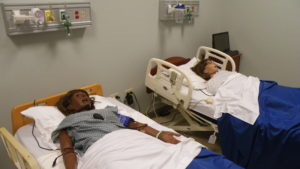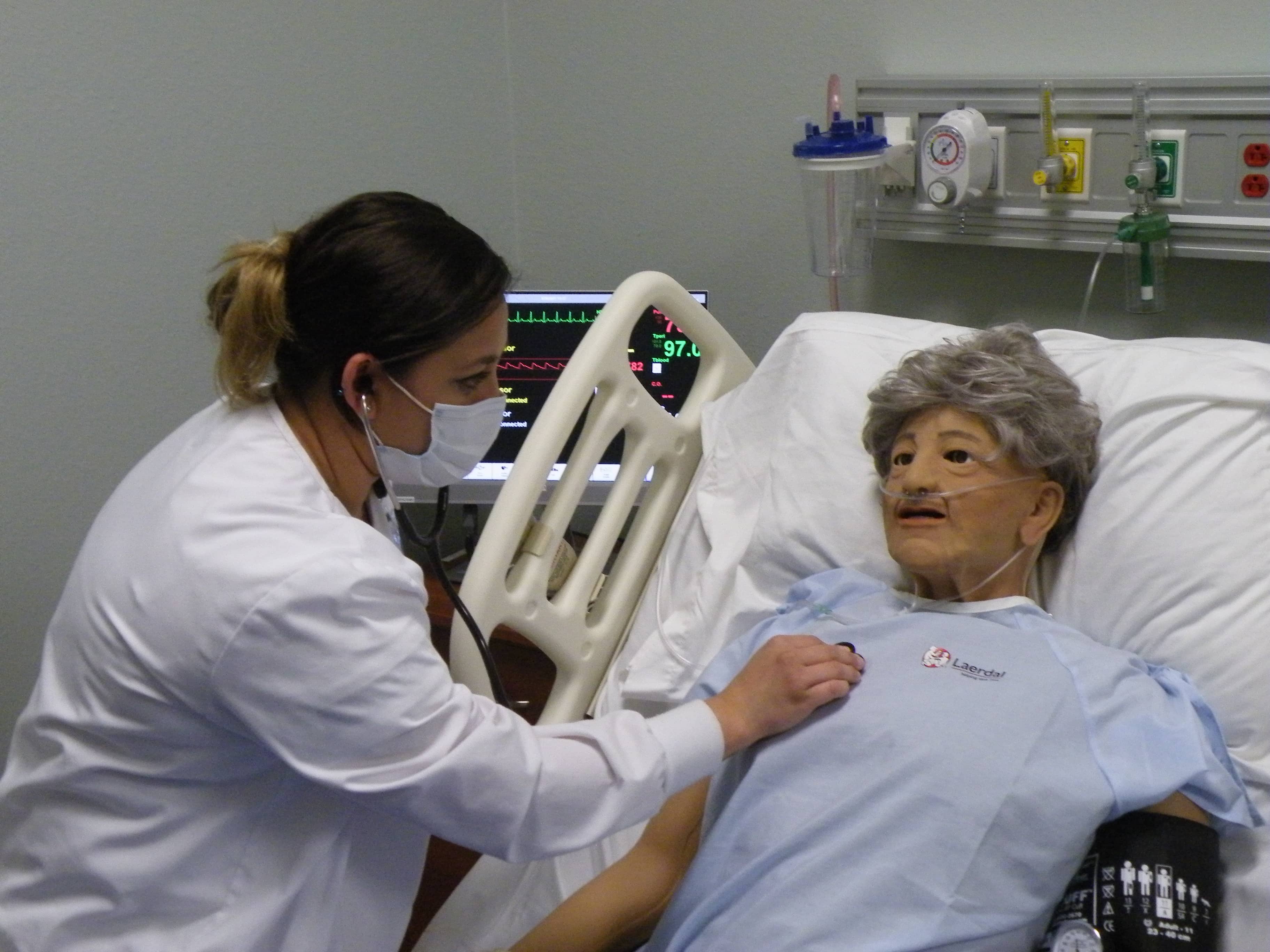
Brownwood News – “Antonia, how are you doing today? Are you in any pain?”, asked the Ranger College nursing student. “No,” replied Antonia. “OK good, I’m glad to hear that,” said the student. Then the patient Antonia suddenly got sick to her stomach and vomited.
Antonia is not a real patient, but rather is a high-tech, interactive, computer-controlled mannequin used in the Ranger College nursing program. The correct term is High Fidelity Mannequin. Ranger College has five of the hi-fi mannequins, including an adult version, a child, an infant, and a birthing mannequin.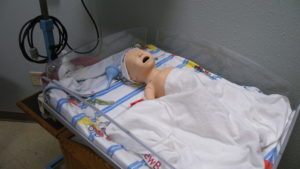
Dr. Sandra Lee, Dean of Nursing at Ranger College, said they received their first hi-fi mannequins in the fall of 2019, and were in full use by the fall of 2020. The mannequins are pre-programmed to perform a myriad of physiological conditions that would simulate real patient conditions and responses. They can exhibit symptoms of various diseases. They blink and breathe, the chest rising and falling with each breath, and the breathing can be monitored with a stethoscope placed on the chest. They cough, and have a pulse. The mannequins can speak a few pre-programmed phrases, but can also speak via the simulation trainer in an adjacent control room.
The mannequins are programmed to respond to the treatment given by the nursing students. On any given day, the students may be given some background on what they will be doing that day with the simulators, but they do not always know what is going to happen. Just as in real life, unexpected things can happen. The trainer can throw curveballs to the students, such as a sudden drop in blood pressure, a heart attack, a seizure, or a hemorrhage.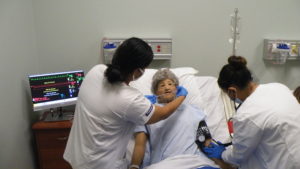
Dr. Lee explained the advantages delivered by the hi-fi mannequins: “It allows students to become very comfortable and confident in their skills. It allows them to make mistakes in a safe environment, because they are not going to harm a real patient. And that they can learn from their mistakes. It also allows our students to celebrate successes. When they do really well we can walk back through that on the videos that are recorded during the simulation and point out what they are doing really well.”
Before the hi-fi mannequins, the training relied on low-tech, non-interactive mannequins, which required the instructors and students to pretend certain situations. Clinical training in a hospital was, and is, an important part of the training. But as Dr. Lee explained, not every student in clinical training could be exposed to every health situation. The hi-fi mannequins allow the students to train on all medical situations.
Ranger College recently received a grant of $120,000 from the Texas Higher Education Coordinating Board, as part of the Nursing Innovation Grant Program. The grant allowed Ranger to purchase an additional mannequin — the senior citizen version — as well as a ventilator and some ICU equipment.
The Texas Board of Nursing allows up to 50% of clinical training time to be done with the hi-fi mannequins, which results in more efficient training. Dr. Lee: “We can provide a much more intentional and very enriched clinical care experience than we may have in the clinical setting. In the clinical setting we are limited to one faculty member to ten students, but we can have more students than that in simulation. That provides cost savings. The real cost savings, though, is going to be what the hospital saves in terms of the onboarding of new graduate, and then the safety. Because if new graduates are more prepared to safely care for patients out of nursing school, then there is less likelihood for error, there will be more patient satisfaction, and the nurses will be more confident in their role.”
Dr. Lee explained that nursing and medical education has taken the notion of simulation from the fields of aviation and space travel training. Just as in those endeavors, the stakes are high. The job must be done correctly the first time. The simulation trainers can throw problems to the students, without the risk of negative consequences to the patients.
At Ranger College the Simulation Learning Co-ordinator is Ashleigh Medina, MSN, RN, ACNP (Master of Science in Nursing, Registered Nurse, Acute Care Nurse Practitioner). Her control room is situated between the two simulation labs. Looking from the control room through one-way glass, Medina can program and control the mannequin, observe the students, speak to them through the mannequin, and throw problems at the students.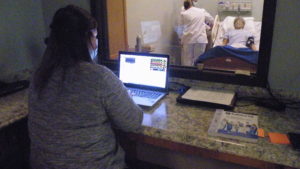
Ranger College also has a Debrief Room, where the students along with their instructor can watch a video of their time with the simulator mannequins, and see what they did right and what can be improved upon.
All nursing students use the simulators. First semester students learn basic skills, second level students learn more advanced nursing skills, third level students learn maternity and mental health nursing skills, and fourth level students use the simulator mannequins to learn critical care: emergency room care, cardiac arrest and respiratory arrest, advanced IV medications, blood pressure control, ventilators, etc.
The mannequins can be altered to exhibit different genders, ages, and skin color, to give the students experience with all types of patients.
Nursing student Katherine Clark commented: “I really enjoy the simulators because it lets us get more clinical time and visualize what we would actually see in a clinical setting. Today we saw a patient with congestive heart failure and COPD. We’ve also had a DK patient, which is Type 1 diabetes.”
Student Abigail Aleman: “Initially I was very awkward with the mannequins. And then going into our clinicals this semester I was more comfortable with the patients based on my simulator experience. Going from a real patient back to the mannequins I find myself talking to them as if they were a real patient. So it is a good experience all around to get practice. And you have to visualize them as a patient rather than just a mannequin, and it really helps.”
